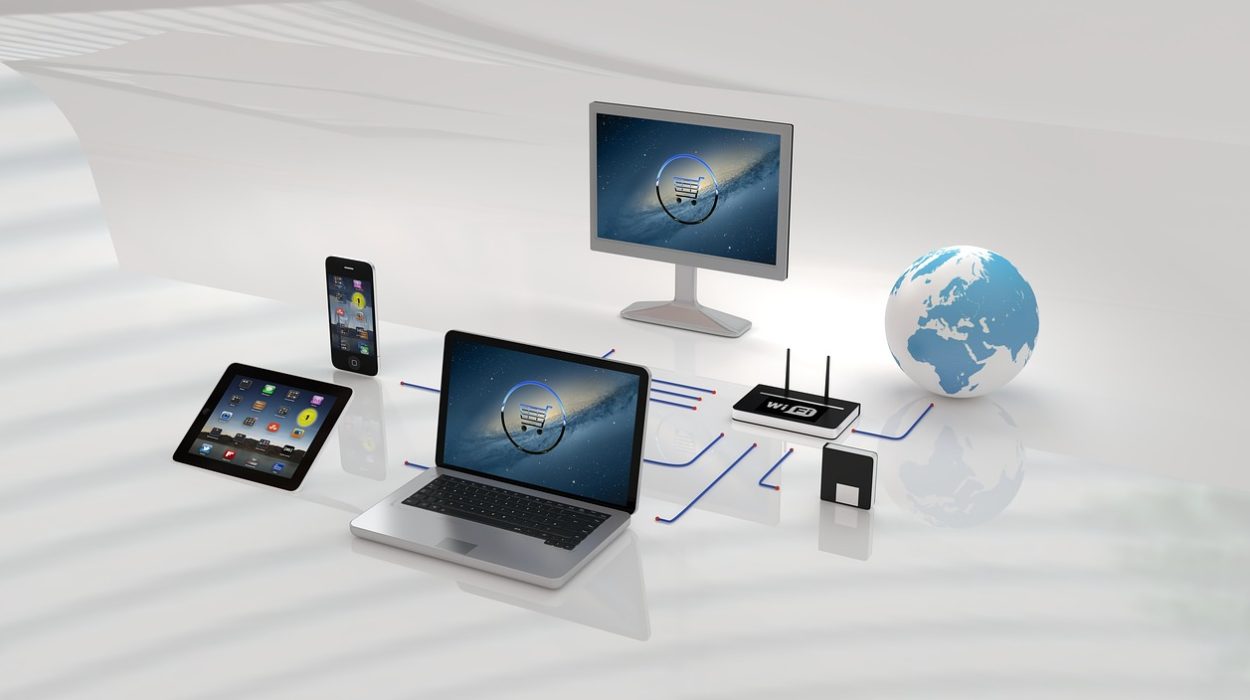Surge in Headless CMS Adoption
The digital landscape is witnessing a significant surge in headless CMS adoption as businesses seek more agile and scalable content management solutions. The flexibility to manage content without being tied to a specific front-end makes headless CMS a preferred choice for organizations looking to streamline their content delivery processes across multiple channels.
One notable example of successful headless CMS implementation is Adidas. The global sportswear giant has adopted a headless CMS to ensure consistent branding and faster time-to-market across its diverse digital platforms. This strategic move has allowed Adidas to maintain a unified brand voice while catering to the unique requirements of different markets and customer segments.
Key Benefits of Headless CMS
- Flexibility and Scalability:
- Independent scaling of content and presentation layers
- Easier integration with new technologies and platforms
- Ability to adapt to changing business needs without overhauling the entire system
- Enhanced Performance:
- Faster loading times through optimized content delivery
- Improved user experiences via Content Delivery Networks (CDNs)
- Efficient use of static site generators for better performance
- Future-Proofing:
- Seamless adaptation to emerging technologies and devices
- Reduced risk of technological obsolescence
- Easier updates and maintenance of the content management system
| Benefit | Traditional CMS | Headless CMS |
|---|---|---|
| Content Delivery | Coupled with front-end | Decoupled from front-end |
| Scalability | Limited by monolithic architecture | Highly scalable |
| Performance | Can be slower due to coupled nature | Faster, optimized content delivery |
| Flexibility | Limited to predefined templates | Flexible content presentation |
Personalization and Omnichannel Delivery
In the era of customer-centric marketing, tailoring content to individual user needs across various devices has become crucial for enhancing engagement and customer satisfaction. Headless CMS plays a pivotal role in enabling personalized, omnichannel content delivery.
Amazon exemplifies the power of personalization through headless CMS. The e-commerce giant leverages its headless architecture to deliver personalized content, product recommendations, and user experiences across its website, mobile app, and even voice-activated devices like Alexa. This seamless integration of personalized content across multiple touchpoints has significantly boosted customer engagement and loyalty.
Implementing Personalization Strategies
- Data-Driven Personalization:
- Utilize user data to deliver targeted content
- Implement A/B testing for content optimization
- Leverage machine learning algorithms for predictive personalization
- Omnichannel Integration:
- Ensure consistent content delivery across web, mobile, IoT devices, and emerging platforms
- Synchronize user preferences and interactions across all channels
- Create a unified customer profile for seamless experiences
To implement effective personalization strategies, consider the following steps:
- Collect and analyze user data
- Segment your audience based on behaviors and preferences
- Create personalized content for each segment
- Implement a headless CMS that supports dynamic content delivery
- Continuously monitor and optimize personalization efforts
Integration of AI and Machine Learning

The integration of Artificial Intelligence (AI) and Machine Learning (ML) is revolutionizing content creation and management in headless CMS systems. These technologies are automating tasks and enhancing content relevance, leading to more efficient operations and improved user experiences.
Netflix stands out as a prime example of AI integration in headless CMS. The streaming giant uses AI for content tagging and metadata creation, significantly improving its recommendation systems. This AI-driven approach has not only enhanced user engagement but also streamlined content management processes.
AI and ML Applications in Headless CMS
- Content Automation:
- Automate routine tasks like tagging and categorization
- Generate content summaries and metadata
- Optimize content scheduling based on user engagement patterns
- Enhanced User Experiences:
- Deliver more accurate and relevant content to users
- Implement chatbots for personalized content recommendations
- Create dynamic content based on real-time user behavior
- Predictive Analytics:
- Forecast content performance and user engagement
- Identify trends and opportunities for content creation
- Optimize content distribution strategies
| AI/ML Application | Benefits |
|---|---|
| Content Tagging | Improved searchability and organization |
| Personalized Recommendations | Higher user engagement and satisfaction |
| Automated Content Generation | Increased content production efficiency |
| Predictive Analytics | Data-driven content strategy decisions |
The Rise of Composable Architectures
Composable architectures are gaining traction in the headless CMS landscape, allowing businesses to build custom solutions by integrating various best-of-breed tools. This approach offers unparalleled flexibility and scalability, enabling organizations to adapt quickly to changing market demands.
Starbucks exemplifies the power of composable architecture in action. The coffee giant leverages a headless CMS to manage its loyalty programs and mobile app, providing a unified and personalized customer experience. This modular approach allows Starbucks to rapidly iterate and improve its digital offerings without disrupting the entire system.
Benefits of Composable Architectures
- Customization: Tailor solutions to specific business needs
- Integration: Seamlessly integrate with other digital tools and platforms
- Agility: Quickly adapt to new technologies and market trends
- Scalability: Easily scale individual components as needed
Implementing a composable architecture with headless CMS involves:
- Identifying core business requirements
- Selecting best-of-breed tools for each function
- Integrating these tools through APIs
- Ensuring seamless data flow between components
- Continuously optimizing and updating the system
Challenges and Considerations

While headless CMS offers numerous benefits, it also presents challenges that need to be addressed for successful implementation:
- Complexity: Requires skilled developers to manage and implement
- Cost: Initial setup and integration can be expensive
- Content Management: Potential disconnect between content creators and final output
- SEO Considerations: Requires additional effort to optimize for search engines
Overcoming Challenges
To mitigate these challenges, consider the following strategies:
- Training and Support:
- Invest in comprehensive training programs for developers and content managers
- Provide ongoing support and resources for team members
- Foster a culture of continuous learning and adaptation
- Budget Planning:
- Allocate sufficient budget for initial setup and ongoing maintenance
- Consider the long-term ROI when evaluating costs
- Explore phased implementation to distribute costs over time
- Content Workflow Optimization:
- Implement robust content preview tools
- Establish clear communication channels between developers and content creators
- Develop content guidelines tailored to headless CMS requirements
- SEO Strategy:
- Implement structured data and schema markup
- Optimize content delivery for fast loading times
- Ensure proper handling of metadata and URL structures
Real-World Applications and Case Studies
Examining successful implementations of headless CMS can provide valuable insights and best practices for organizations considering this approach.
- Nike: The sportswear giant uses headless CMS to power its website and mobile app, enabling rapid updates and consistent content delivery across multiple markets and languages. This approach has significantly improved Nike’s ability to launch targeted marketing campaigns and product releases globally.
- REWE Group: This German retail and tourism cooperative migrated to headless CMS to improve scalability, content management, and user experience across its diverse portfolio of brands. The move has resulted in faster website performance, improved content consistency, and enhanced ability to adapt to changing market conditions.
Key Takeaways from Case Studies
- Scalability: Headless CMS supports large-scale operations efficiently, allowing businesses to manage content across multiple brands, markets, and platforms.
- User Engagement: Personalized content delivery leads to higher user engagement and satisfaction, as evidenced by improved metrics in both Nike and REWE Group’s digital platforms.
- Time-to-Market: The decoupled nature of headless CMS enables faster content updates and launches, giving businesses a competitive edge in rapidly changing markets.
- Consistency: Headless CMS facilitates consistent brand messaging and user experiences across various touchpoints, enhancing brand loyalty and recognition.
For more information on headless CMS implementation strategies and best practices, visit the Contentful Resource Center.
The future of headless CMS is bright, with trends indicating increased adoption, advanced personalization, and integration of AI. As the digital landscape continues to evolve, businesses that embrace these technologies will be well-positioned to deliver superior digital experiences and stay ahead in the competitive market. By leveraging the flexibility, scalability, and advanced features of headless CMS, organizations can create more engaging, personalized, and efficient digital experiences for their users across all platforms and devices.

